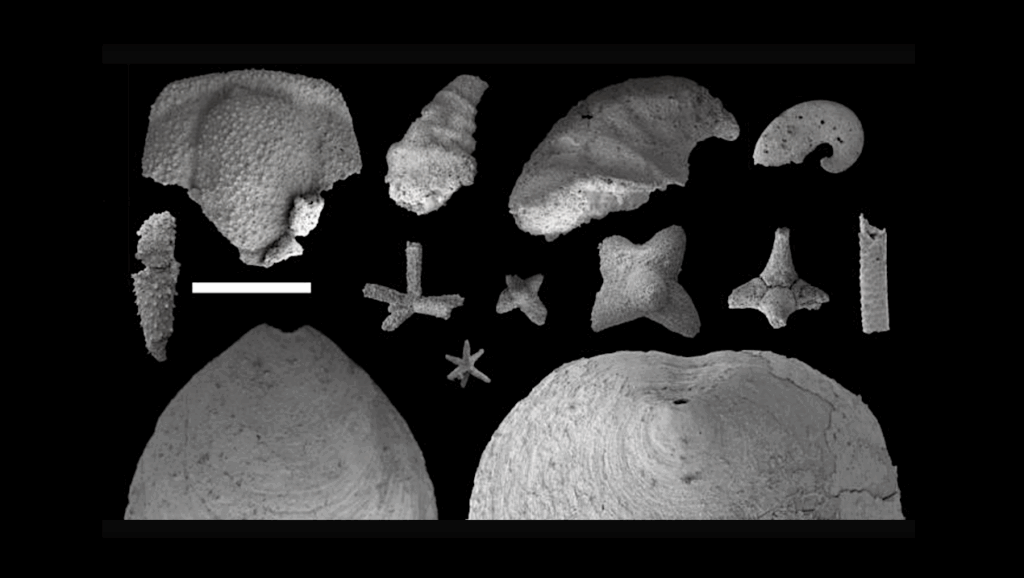Earliest Jurassic Corals Discovered

Five times in Earth’s history mass extinction events have wiped out up to 90 percent of global life.
University of Montana doctoral student Montana Hodges and geosciences Professor George Stanley recently found the fossil record of the earliest North American coral species that reappeared after the Triassic-Jurassic mass extinction event.
Their findings were published in the October issue of GSA Today: A Publication of the Geological Society of America. The article “North American coral recovery after the end-Triassic mass extinction, New York Canyon, Nevada,” is featured on the journal’s cover.
Hodges and Stanley research the collapse and recovery of coral reefs. Corals are particularly hard-hit by subtle changes in ocean temperature and acidity. About 200 million years ago, corals and reefs completely collapsed. During this particular extinction event, researchers have found no evidence of asteroid impact or other catastrophic events. Instead, the geologic and paleontological records point to massive global climate change.
A UM field team measure rocks at New York Canyon, Nevada. A UM field team measure rocks at New York Canyon, Nevada. “We believe the warming climate was due to a combination effect from supercontinent Pangea breaking apart, changes in sea level and massive amounts of gas spewing into the atmosphere from cracks in the Earth’s crust,” Hodges said.
After that mass extinction event, it took coral reefs more than 20 million years to completely recover. In the dusty, high desert of central Nevada, the team discovered the earliest North American Jurassic corals.
New York Canyon, Nevada, is swathed with sedimentary rocks that during the Jurassic period represented the west coast of North America. Geologists have flocked to this site for almost a hundred years to study the unique and continuous deposition of rocks that span the Triassic-Jurassic boundary. The fossils left in the rocks offer a fairly complete snapshot of the mass extinction. Yet, the significance of the corals found there had not been noted until now.
“The Jurassic corals represent a recovery of all species after the event,” Hodges said. “They are simple, solitary corals that lived in thick mud, which may have helped their survival during such a tumultuous time. Or they may have migrated from the distant side of Pangea.”
Regardless, they are the earliest representatives of the coral that would slowly rebuild and diversify over millions of years.
By studying these unique corals, Hodges and Stanley aim to contribute a better understanding of survival and recovery.
“Our study may lend valuable information to understanding the peril of coral reefs today,” Hodges said.








